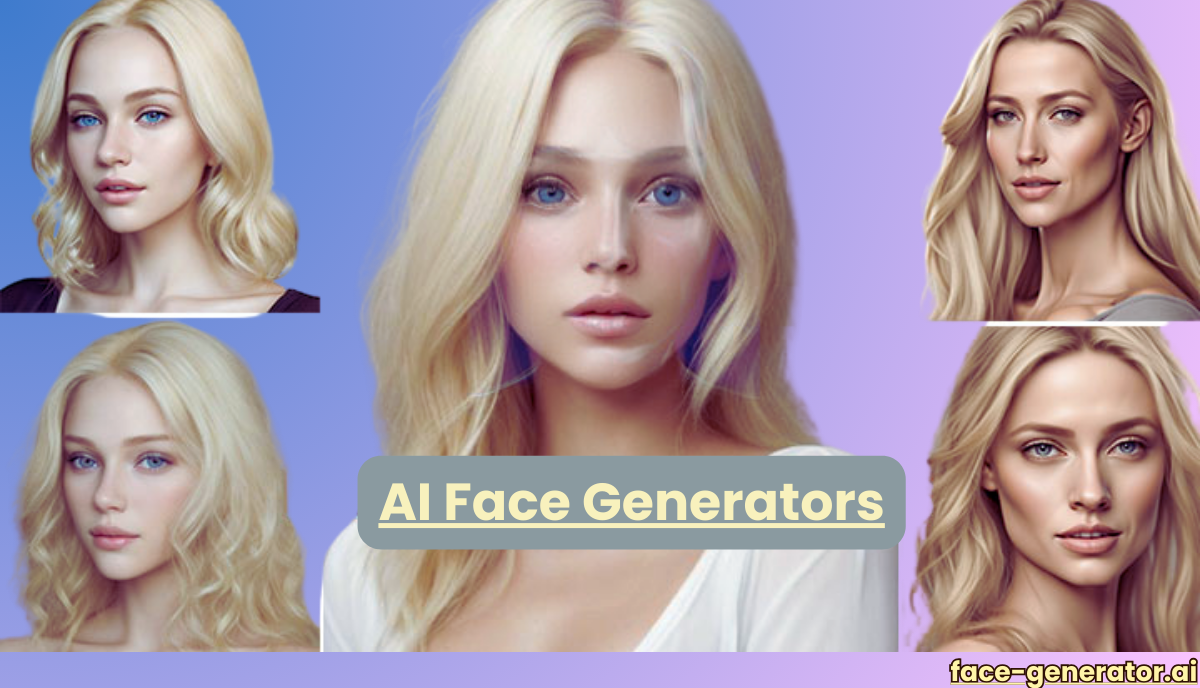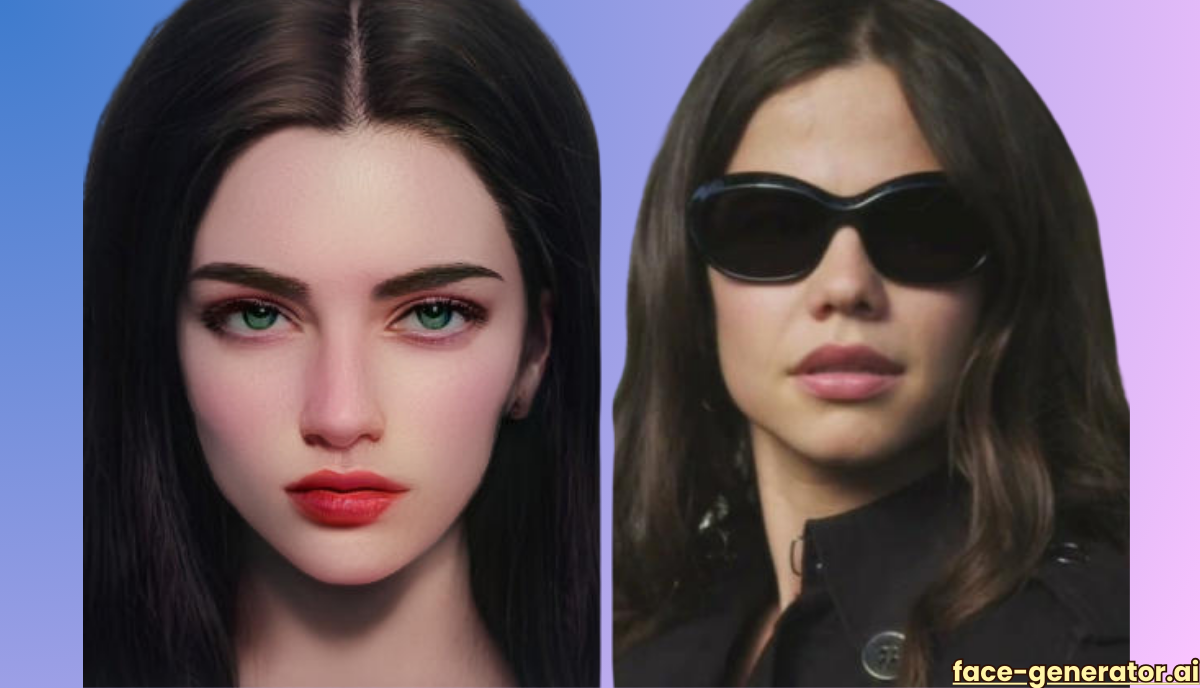Introduction:
Here You Will see The Ultimate Guide to AI Face Generators Technology. In the fast-evolving landscape of artificial intelligence, AI face generators have emerged as a groundbreaking technology, capable of producing strikingly realistic and unique human faces that blur the lines between the real and the virtual.
The Ultimate Guide to AI Face Generators Technology:
This comprehensive exploration delves into what AI face generators are, how they work, their underlying technologies, and their various applications across industries.
Understanding AI Face Generators
AI face generators are sophisticated algorithms that leverage machine learning, particularly generative adversarial networks (GANs), to produce high-fidelity, synthetic faces that often appear indistinguishable from photographs of real people. These faces are not simply morphed or blended from existing images but are entirely new creations, each with its unique characteristics and expressions.

The Technology behind AI Face Generators
- Generative Adversarial Networks (GANs): GANs are the cornerstone of AI face generators. They consist of two neural networks:
- Generator: The generator’s task is to create synthetic faces. It starts by producing random noise and gradually refines it into increasingly realistic faces through iterative training.
- Discriminator: The discriminator’s role is to distinguish between real faces (from a training dataset) and the synthetic faces produced by the generator. It provides feedback to the generator, guiding it to improve its creations.
Through a continuous back-and-forth between the generator and discriminator, the generator becomes increasingly adept at producing faces that can fool even the discerning human eye.
- Training Data: GANs require extensive datasets of real faces to learn the intricacies of human facial features, expressions, and variations. The quality and diversity of the training data significantly impact the realism and versatility of the generated faces.
- StyleGAN and StyleGAN2: StyleGAN and its improved version, StyleGAN2, are state-of-the-art GAN architectures specifically designed for generating high-resolution, photorealistic faces with fine-grained control over various attributes, such as age, gender, and facial expressions.
How AI Face Generators Work
The process of generating a face using AI typically involves several stages:
- Data Collection: The AI model is trained on a vast dataset of human faces. This dataset needs to be diverse, covering various ages, ethnicities, and facial expressions to ensure the model can generate a wide range of faces.
- Preprocessing: The images are preprocessed to ensure consistency. This might involve resizing, aligning, and normalizing the images to remove any noise or irrelevant features.
- Training the Model: The GAN model is trained using the preprocessed data. This stage can take significant time and computational resources, as the model needs to learn to differentiate between real and generated faces.
- Generation: Once trained, the generator can create new faces based on random inputs. The discriminator continues to refine its ability to spot fakes, ensuring the generated faces are as realistic as possible.
- Post-processing: The generated images might undergo additional processing, such as enhancing resolution or adding textures, to improve realism.

Applications of AI Face Generators
AI face generators have found diverse applications across various industries, transforming the way we create and interact with digital content.
1. Gaming and Virtual Reality:
- Character Creation: AI face generators empower gamers to create highly personalized and unique avatars, enhancing immersion and engagement in virtual worlds.
- Non-Player Characters (NPCs): Game developers can populate their games with a vast array of diverse and realistic NPCs, creating more dynamic and believable game environments.
- Virtual Reality Experiences: AI-generated faces can contribute to more immersive and interactive virtual reality experiences, where users encounter lifelike virtual characters.
2.Film and Animation:
- Digital Actors: AI face generators can be used to create digital actors for scenes that are too dangerous, expensive, or logistically challenging to film with real actors.
- Crowd Scenes: Generating large crowds of realistic background actors can significantly reduce the cost and complexity of film production.
- Character Design: Animators can leverage AI face generators to explore various character designs and expressions quickly and efficiently.
3.Marketing and Advertising:
- Personalized Content: Advertisers can tailor their campaigns by generating faces that resonate with specific target demographics, potentially increasing engagement and conversion rates.
- Virtual Influencers: AI-generated faces can be used to create virtual influencers who promote products and services on social media, offering brands a new avenue for reaching audiences.
- Product Visualization: AI face generators can help visualize how products, such as cosmetics or eyewear, would look on different individuals, aiding in product selection and marketing.
4.Identity Protection and Privacy:
- Anonymization: AI face generators can be used to anonymize faces in images and videos, protecting the privacy of individuals while still preserving the visual context.
- Synthetic Data for Research: Researchers can use AI-generated faces to create synthetic datasets for training facial recognition algorithms and other AI models, mitigating privacy concerns associated with using real data.
Future Trends in AI Face Generators
AI face generation technology continues to advance rapidly, and several exciting trends are on the horizon.
- Increased Realism and Diversity: As GAN architectures and training datasets improve, AI-generated faces are expected to become even more realistic and diverse, capturing the full spectrum of human facial features and expressions.
- Real-Time Face Generation: Advances in hardware and software optimization may enable real-time generation of high-quality faces, opening up possibilities for interactive applications, such as live virtual avatars and augmented reality experiences.
- Emotion and Expression Control: Researchers are exploring ways to give users finer control over the emotions and expressions of AI-generated faces, enabling more nuanced and expressive virtual characters.
- Ethical Considerations and Regulation: As AI face generation technology becomes more powerful, ethical considerations surrounding its use, such as the potential for deepfakes and misinformation, will become increasingly important. Robust regulations and guidelines will likely be necessary to ensure responsible and ethical use.
Expert Interviews
- Dr. Emily Chen, AI Researcher: “AI face generators are revolutionizing the way we create and interact with digital content. The potential applications are vast, from enhancing gaming and virtual reality experiences to transforming the film and advertising industries. However, it is crucial to address the ethical implications of this technology and ensure its responsible use.”
- John Davis, Game Developer: “AI face generators have empowered us to create more immersive and personalized gaming experiences. Players can now design unique avatars that truly represent them, fostering a deeper connection to the virtual world.”
- Sarah Thompson, Marketing Specialist: “AI face generators offer exciting possibilities for personalized marketing campaigns. By generating faces that resonate with specific target audiences, we can create more engaging and effective advertisements.”
Technical Explanations
- Loss Functions: Loss functions are mathematical expressions that quantify the difference between the generated faces and real faces. GANs use loss functions to guide the training process, encouraging the generator to produce increasingly realistic faces.
- Latent Space: The latent space is a multidimensional representation of the features and variations that define a face. By manipulating points in the latent space, users can control various attributes of the generated faces, such as age, gender, and facial expressions.
Real-World Examples
- [invalid URL removed]: This website showcases the power of AI face generators by generating a new, unique, and strikingly realistic face every time the page is refreshed.
- Generated Photos: This platform offers a vast library of AI-generated faces that can be used for various purposes, including marketing, advertising, and design projects.
- Rosebud AI: This company provides AI-powered tools for generating diverse and inclusive faces, addressing the need for greater representation in digital content.
Conclusion
AI face generators represent a remarkable technological achievement, capable of producing high-fidelity, synthetic faces that blur the lines between the real and the virtual. With applications spanning gaming, film, marketing, and beyond, this technology has the potential to transform the way we create and interact with digital content. However, it is crucial to navigate the ethical considerations and ensure responsible use as AI face generation technology continues to advance. The future holds exciting possibilities for increased realism, diversity, and real-time generation, further expanding the creative and practical applications of this groundbreaking technology.
FAQs:
- Are AI-generated faces truly unique, or are they based on existing images?
AI-generated faces are indeed unique creations. While they are trained on datasets of real faces, the generative models learn the underlying patterns and structures of human faces rather than simply copying or morphing existing images. This allows them to produce entirely new faces, each with its own distinct characteristics and expressions.
- Can AI face generators be used to create deepfakes or spread misinformation?
Unfortunately, yes, AI face generators can be misused to create deepfakes, which are manipulated videos or images that convincingly replace a person’s face with someone else’s. This poses a significant risk for spreading misinformation and damaging reputations. It’s essential to be critical of media content and rely on trusted sources to combat the potential harm of deepfakes.

